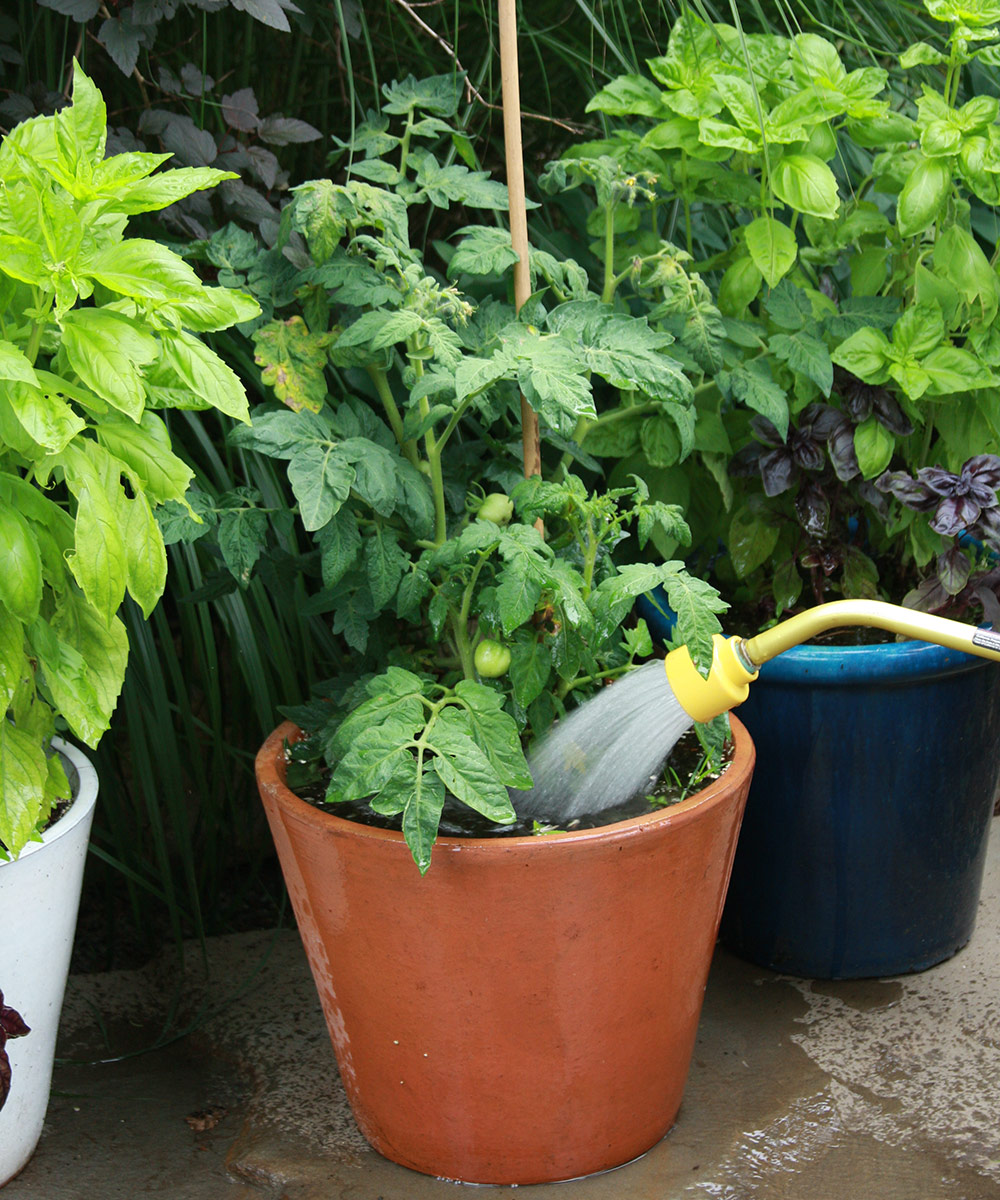
If you do any vegetable gardening at all in the Southeast, you likely grow tomatoes. Even people who don’t particularly care for tomatoes often can’t resist planting a few every year. However, the heat, humidity, and inconsistent rain patterns in our region lead to a variety of challenges for those investing their time in tomatoes. Bacterial wilt (Ralstonia solanacearum), early blight (Alternaria linariae), late blight (Phytophthora infestans), and bacterial spot (primarily Xanthomonas perforans) are just some of the diseases that can pop up on tomatoes. Tomatoes are also fast-growing plants that need to be managed. Providing proper pruning, support, and irrigation can help prevent problems when growing tomatoes in the southeast.

Indeterminate vs. determinate tomatoes
Tomatoes are often lumped into two different types; the first is determinate. These are varieties that reach a “determinate” plant height. The majority of their fruit matures within a month or two. This type of tomato is great for gardeners who like to preserve their harvest.
Indeterminate varieties grow throughout the season, forming long vinelike branches. Harvest happens gradually. This is great for gardeners who like to pick a few tomatoes every day for kitchen use. Understanding which of these two types you are growing is critical when you start thinking about pruning tomatoes.
Take a light hand with determinate tomatoes
Because of the way determinate tomatoes form their fruit, they need little to no pruning. I suggest you prune the bottom-most side branches that are touching the ground. This gets foliage off the ground and can help reduce the spread of some of the most common tomato pathogens.

Pruning indeterminate tomatoes
Many studies done in commercial tomato operations suggest there is not much difference in harvest quantity between tomatoes that get pruned and those left to grow freely. However, as with determinate tomatoes, it’s a good idea to keep lower leaves and branches from touching the ground. This type of tomato also tends to develop overly vigorous side shoots (suckers) and branches that are hard to contain with even the best cage or structure. On small or cherry-type tomatoes, this is often not a big deal. However, in larger-fruiting varieties, branches outside of your support structure can break under their own weight. These tomatoes are also more susceptible to sunscald and bird damage. In my garden, if I see vigorous suckers shooting out far beyond my support structure, I prune them back. I do my best to make my cut just after a set of leaves or smaller side branch. Keep your cut on the outside of your support structure. Clean pruners between cuts, or break off suckers by hand when possible. This reduces the possibility of transferring pathogens to open cuts.

Caring for tomatoes in the Southeast
These two factors can make or break your tomato harvest.
Supporting tomatoes is a top priority
Your number-one priority when growing tomatoes in the Southeast should be support, not pruning. The system you use to keep sprawling plants and fruit off the ground is critical. This is particularly important with indeterminate tomatoes. Due to the tremendous growth produced by many varieties in the Southeast, your standard, round, three-tiered tomato cage is inadequate. In my garden, I grow lots of tomatoes and use a structural strategy called the Florida weave. I use tall metal T-posts and twine and weave support around the tomatoes as they grow. In lieu of pruning, I often just add a new weave of support. A quick search for “Florida weave” on the internet will give you any additional info you need on this method. It’s also important to move tomatoes around year over year in the garden to reduce the spread of disease, so I remove these posts in the fall and store them for the winter. They should last many years.

Consistent moisture is critical
Lastly, consistency in how you water your tomatoes is an important hedge against disease and poor fruit set in the Southeast. Tomatoes like consistent moisture during the growing season, particularly at the time of fruiting. Avoid overhead watering as much as possible to prevent the spread of disease.
Tomatoes can be a very rewarding crop to grow. Continue to seek out methods that work for you. Just one plant can yield an abundance of fruit. Our warm, long growing season is great for growing this tasty crop.
For more tomato growing tips, check out:
And for more Southeast regional reports, click here.
—Andy Pulte is a faculty member in the plant sciences department at the University of Tennessee.
Fine Gardening Recommended Products

A.M. Leonard Deluxe Soil Knife & Leather Sheath Combo
Fine Gardening receives a commission for items purchased through links on this site, including Amazon Associates and other affiliate advertising programs.

Corona E-Grip Trowel
Fine Gardening receives a commission for items purchased through links on this site, including Amazon Associates and other affiliate advertising programs.



















Comments
Log in or create an account to post a comment.
Sign up Log in